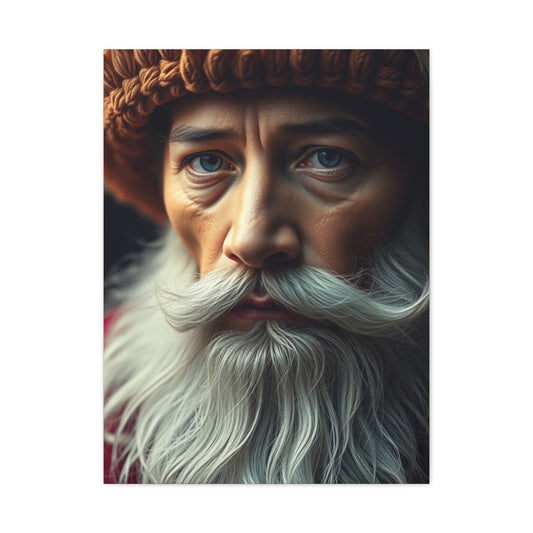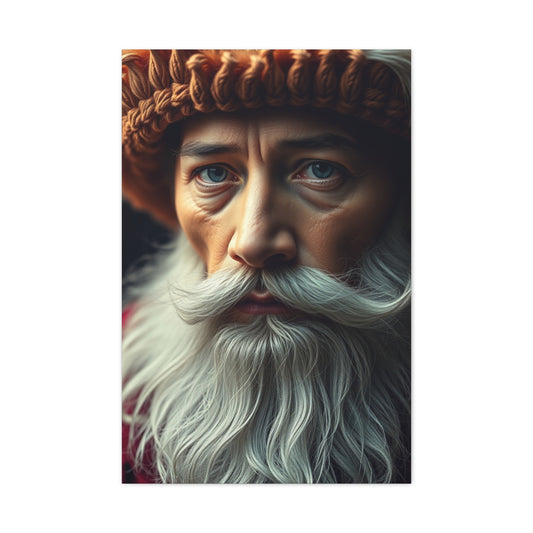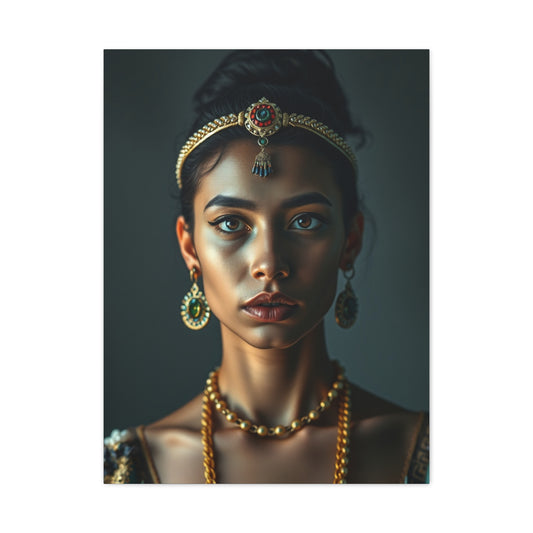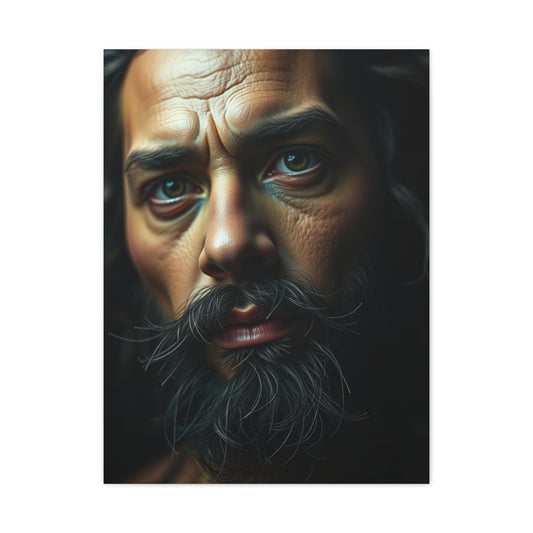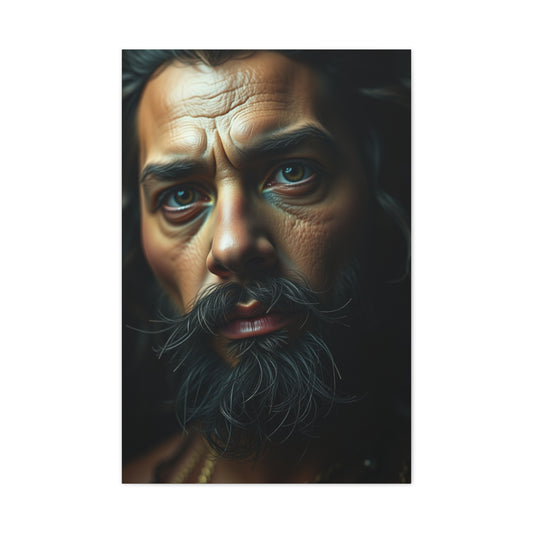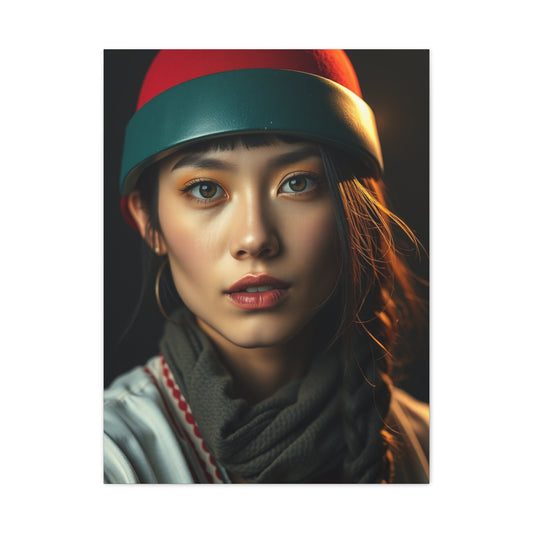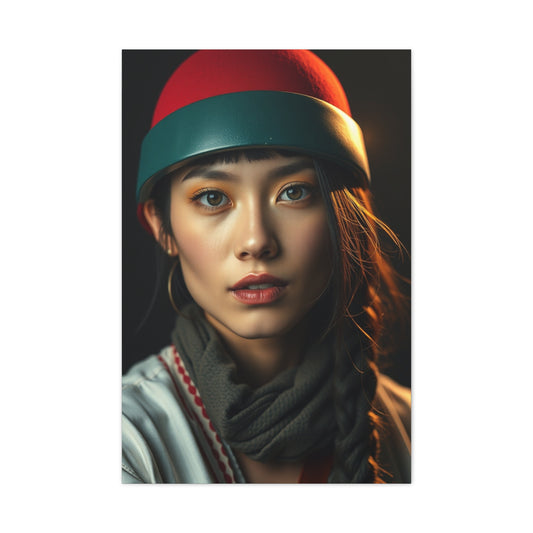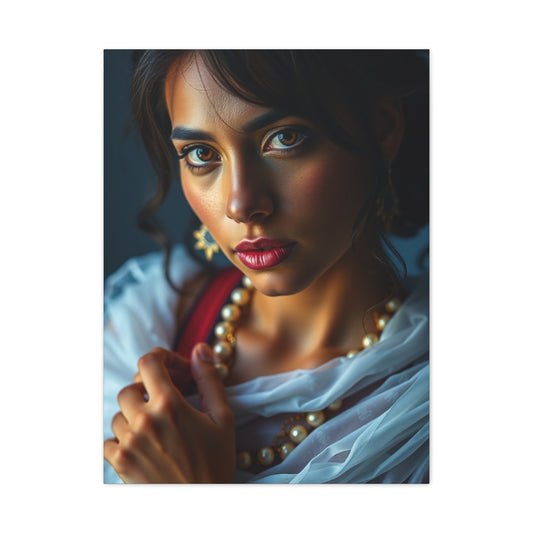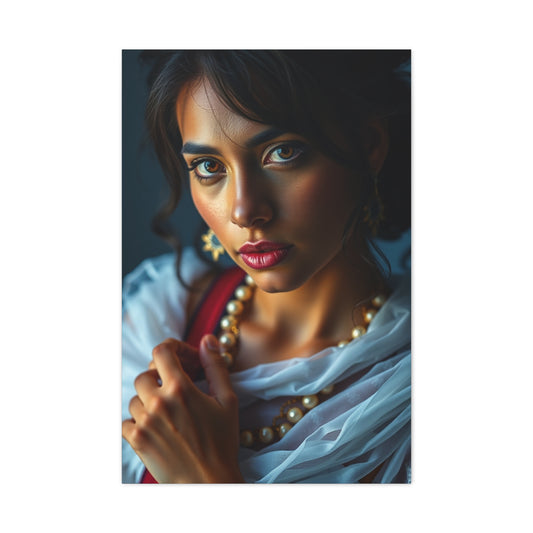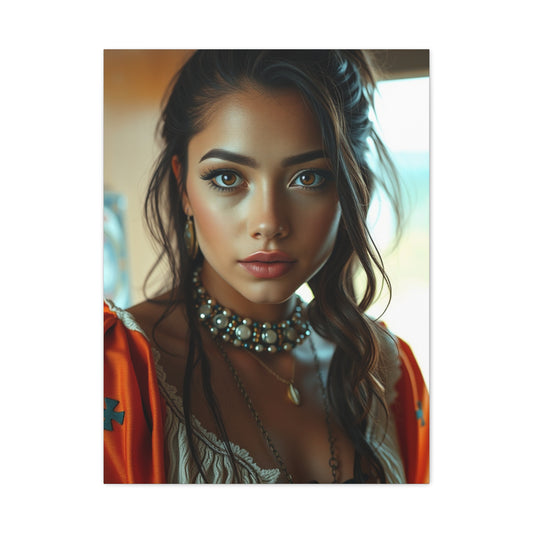Back button focus, often abbreviated as BBF, is a technique in photography that redefines how a camera handles autofocus. In standard camera operation, pressing the shutter button halfway performs two tasks simultaneously: it activates autofocus and prepares the camera to take a photo. When the shutter is fully pressed, the camera captures the image. While this traditional approach works well in many scenarios, it can create challenges in fast-moving, unpredictable, or creative shooting situations. Back button focus solves this by separating these functions, assigning autofocus to a dedicated button, usually located on the back of the camera body. This simple yet powerful change gives photographers more control over focus acquisition and image capture.
The primary principle of back button focus is independence. By assigning autofocus to a rear button—commonly labeled “AF-ON” or customizable depending on the camera model—you gain the ability to focus without the shutter button controlling it. Your index finger remains on the shutter to take the picture, while your thumb can engage the focus system. This decoupling allows for maintaining focus on a subject even while recomposing the shot, switching between stationary and moving subjects seamlessly, and eliminating the common problem of the camera refocusing at inopportune moments. The technique effectively separates two essential tasks of photography, giving the photographer full command over when and how focus is acquired.
Back button focus is particularly effective when paired with modern autofocus technologies, such as single-point AF, zone AF, or dynamic tracking. Single-point AF allows for precise focus on a specific area, such as a subject’s eyes in portrait photography. Zone or wide-area tracking spreads the focus points across a larger area, which is useful for following a moving subject. With back button focus, you can maintain a locked focus point using your thumb while your index finger captures multiple frames without changing the focus. This is invaluable in scenarios where the subject moves unpredictably, or the composition requires careful recomposition after achieving focus.
One of the most significant advantages of BBF is its ability to enhance focus control in dynamic environments. In action photography, for example, subjects often move rapidly and erratically. Using traditional shutter-linked autofocus, pressing the shutter halfway may cause the camera to refocus with every frame, resulting in a loss of precise focus or unintended shifts. With back button focus, you can engage continuous autofocus using the dedicated button, track the moving subject with accuracy, and fire multiple shots while maintaining the exact focus point. This allows photographers to react instinctively to the movement of their subjects while keeping the focus consistently sharp.
Back button focus also excels in scenarios that require recomposition after focusing. Consider portrait photography: you want the subject’s eyes to be sharp, but you also want to place them off-center for a more pleasing composition. Normally, pressing the shutter halfway might cause the camera to refocus when you adjust the framing, potentially shifting the focus away from the eyes. By using BBF, you lock focus with your thumb, recompose the frame freely, and capture the image without worrying about losing sharpness. This precision is particularly important when shooting with wide apertures, where the depth of field is shallow and even minor focus errors are noticeable.
Another benefit of back button focus is its impact on shutter lag. In traditional autofocus systems, the camera may prioritize focus before taking the photo, introducing a slight delay. This lag can be frustrating when capturing fast action, fleeting expressions, or critical moments that demand perfect timing. With BBF, the photographer decides exactly when focus is acquired, reducing or eliminating the delay caused by automatic focus engagement. The ability to fire the shutter instantly after locking focus ensures that you capture the decisive moment without compromise, a critical advantage in sports, wildlife, and street photography.
Back button focus also encourages deliberate and mindful photography. When the focus is controlled independently, photographers tend to think more about composition, focus points, and timing. It shifts the focus process from a reactive, automatic task to a proactive, intentional action. Over time, this practice can significantly improve a photographer’s technical understanding of autofocus behavior, as well as their ability to anticipate subject movement, manage depth of field, and compose compelling images. The technique also trains muscle memory, as photographers become accustomed to using their thumb for focusing and their index finger solely for capturing, creating a workflow that feels natural and intuitive.
The adaptability of back button focus is another notable advantage. Photographers can tailor the technique to different situations and subjects. In portrait photography, it allows precise control over the focus on eyes or specific facial features while permitting free recomposition. In wildlife photography, it ensures moving animals remain sharp even as you pan across a scene. In sports photography, it enables tracking of fast-moving athletes, while also giving the option to lock focus for sudden action shots. This versatility makes BBF a favorite among professionals and advanced enthusiasts who demand both precision and speed in capturing their images.
To implement back button focus, you must understand your camera’s customization options. Most modern DSLRs and mirrorless cameras from major brands, such as Canon, Nikon, Sony, and Fujifilm, allow reassignment of buttons. Typically, the AF-ON button or a custom function button can be programmed to activate autofocus independently of the shutter. Learning the exact procedure for your camera model is essential, and experimenting with different configurations ensures the setup suits your shooting style. Initially, some photographers may find it counterintuitive to separate focus from the shutter, but with practice, it becomes a seamless and efficient part of the photographic workflow.
Mastering back button focus requires patience and repetition. Start by practicing with static subjects, using the thumb button to acquire focus while recomposing the frame. Gradually introduce moving subjects to understand how continuous autofocus interacts with BBF. Observe how different autofocus modes, such as single-point, dynamic-area, or wide-area tracking, respond when controlled with the rear button. Through consistent practice, photographers develop a sense of when to press the focus button, when to hold it, and how to maintain precise control over their subject without being distracted by the automatic behaviors of the camera.
Beyond technical advantages, back button focus can also influence creativity. With control over focus timing, photographers can experiment with focus-and-recompose techniques, intentional focus shifts, and focus tracking across multiple frames. It encourages pre-visualization of shots, allowing the photographer to plan focus points, composition, and timing before capturing the image. This results in a more intentional and expressive photographic process, elevating both technical precision and artistic impact.
Back button focus is not limited to high-end cameras; it is accessible on most modern camera models. Enthusiasts with entry-level DSLRs or mirrorless cameras can implement BBF and experience significant improvements in focus control. While it may take time to break old habits of using the shutter for focus, the benefits in responsiveness, accuracy, and creative flexibility make it a worthwhile investment of effort.
Back button focus transforms the way photographers interact with their cameras. Decoupling autofocus from the shutter release provides unprecedented control, allowing precise focus on both stationary and moving subjects, reducing shutter lag, enhancing composition flexibility, and encouraging intentional photographic practices. Mastery of this technique can improve technical accuracy, workflow efficiency, and creative possibilities, making it an essential skill for portrait, action, wildlife, and sports photographers. The initial learning curve is easily offset by the long-term advantages, as BBF fosters both confidence and competence in capturing sharp, compelling images.
Back button focus is more than a camera setting—it is a philosophy of photography that emphasizes deliberate control, anticipation of subject behavior, and mindful engagement with every frame. Photographers who adopt this technique gain not only technical precision but also the freedom to explore creative approaches, turning ordinary captures into consistently well-focused and visually striking photographs. Whether tracking the rapid movement of a bird in flight or composing a delicate portrait with shallow depth of field, BBF provides the foundation for capturing images with clarity, intention, and artistic impact.
Practical Applications of Back Button Focus in Action and Sports Photography
Back button focus (BBF) is a transformative technique for photographers who work in dynamic environments, particularly in action and sports photography. In these fast-paced settings, subjects move unpredictably, often changing speed, direction, and distance from the camera. Traditional autofocus systems that link focusing to the shutter button can be limiting in these scenarios, as pressing the shutter halfway engages autofocus simultaneously, potentially causing the camera to refocus at inopportune moments. By decoupling focus from the shutter release, BBF allows photographers to maintain precise control over focus while capturing high-speed sequences with confidence and consistency.
One of the most immediate benefits of BBF in sports photography is the ability to track moving subjects effectively. When photographing athletes in motion, a football player sprinting across the field or a gymnast performing a complex routine, maintaining continuous focus is essential. With BBF, the photographer can hold the focus button with the thumb, allowing the autofocus system to track the subject continuously while the index finger activates the shutter to capture multiple frames in rapid succession. This eliminates the need to constantly refocus with each shot, reducing the risk of missed or soft-focused images.
In addition to continuous tracking, BBF enhances compositional flexibility during action sequences. Often, photographers need to reframe a shot to capture the most dramatic angle or include contextual elements such as other players, spectators, or environmental details. By locking focus on the subject using the back button, the photographer can freely recompose the frame without worrying about the camera attempting to refocus on an unintended object. This is particularly useful in wide-aperture settings, where a shallow depth of field makes precise focus critical for separating the subject from the background.
Back button focus also allows for seamless switching between different autofocus modes in action scenarios. For example, single-shot autofocus (AF-S) is ideal for stationary moments, such as a goalkeeper preparing to block a penalty, while continuous autofocus (AF-C) is better suited for tracking moving athletes. With BBF, a photographer can engage AF-C by holding the dedicated focus button and quickly releasing it to lock focus for a static moment. This flexibility reduces the time spent adjusting settings mid-shoot and enables the photographer to respond instantly to unpredictable action, capturing decisive moments with precision.
Timing is another critical aspect of sports and action photography that benefits from BBF. Traditional shutter-linked autofocus may introduce slight delays because the camera prioritizes focus acquisition before triggering the shutter. This can result in missed peak moments, such as a sprinter crossing the finish line or a basketball player mid-jump. By separating focus control from the shutter release, BBF eliminates this lag. The photographer decides exactly when to acquire focus, and the shutter responds instantly when the subject reaches the optimal position. This precise control over timing is invaluable for high-speed photography, ensuring every frame is sharp and well-composed.
BBF is particularly advantageous in unpredictable or complex scenes where multiple potential subjects exist. For instance, in a cycling race, several riders may pass through the frame simultaneously. Using traditional autofocus, the camera may inadvertently lock onto the wrong subject when the shutter is pressed. With BBF, the photographer can maintain focus on the intended cyclist while tracking their movement across the frame, ignoring distractions and maintaining consistent subject sharpness. This ability to selectively control focus improves both accuracy and storytelling, allowing photographers to capture images that highlight the main subject effectively.
Environmental factors also play a significant role in action photography, and BBF can help mitigate challenges such as low light, harsh shadows, or reflective surfaces. In dimly lit indoor arenas or evening sports events, cameras often struggle to achieve autofocus quickly. By holding the focus button, photographers give the autofocus system time to lock onto the subject while avoiding the repeated interruptions that can occur when focus is tied to the shutter. Additionally, in situations with reflective surfaces, such as wet fields or glossy gym floors, BBF allows the photographer to maintain focus on the subject without being distracted by light reflections that might confuse the autofocus system.
Wildlife photography shares many of the same demands as sports photography, and BBF is equally valuable in these contexts. Capturing fast-moving animals, birds in flight, or unpredictable wildlife behavior requires precise focus and timing. Traditional shutter-linked autofocus often results in missed shots due to the camera attempting to refocus on background elements or irrelevant parts of the scene. With BBF, photographers can lock focus on the animal and pan across the scene as needed, capturing multiple images without losing the critical sharpness needed to highlight intricate details, such as feather patterns, fur texture, or eye reflections.
Implementing BBF effectively in action photography requires understanding camera customization and autofocus modes. Most modern cameras allow the reassignment of the AF-ON button or another rear button to control autofocus independently. Photographers should practice activating continuous autofocus, experimenting with different tracking modes, and learning how their camera behaves with fast-moving subjects. Over time, this familiarity allows photographers to anticipate the camera’s response, adjust their hand position, and develop a fluid workflow that maximizes both accuracy and speed.
Another key consideration is lens selection. Fast, wide-aperture lenses complement BBF by providing more light to the sensor and enabling shallower depth-of-field control, which isolates the subject from distracting backgrounds. Paired with BBF, these lenses allow precise focus placement and rapid capture of dynamic action. Telephoto lenses are often preferred for sports or wildlife, as they allow photographers to maintain a safe distance while filling the frame with the subject. With BBF, maintaining focus on distant, fast-moving subjects becomes more manageable, even when the depth of field is narrow.
The creative possibilities of BBF extend beyond purely technical advantages. Photographers can experiment with focus-and-recompose techniques, panning shots, and selective focus transitions during sequences of action. For example, in a motorsport event, a photographer may lock focus on a car and track it across the frame, intentionally allowing the background to blur for a dynamic motion effect. By controlling when focus is acquired and released, BBF enables photographers to merge technical precision with artistic expression, enhancing the storytelling power of each image.
Training and practice are essential for mastering BBF in action photography. New users may initially find the separation of focus and shutter control counterintuitive, especially if they are accustomed to traditional autofocus methods. Starting with slower-moving subjects, practicing focus locks, and gradually increasing the complexity of the scene builds confidence. Over time, photographers develop muscle memory, learning instinctively when to engage the focus button and when to fire the shutter. This fluency allows them to focus on composition, timing, and creative decisions rather than worrying about technical limitations.
In addition to human or animal subjects, BBF is valuable in capturing sports equipment or objects in motion. For instance, in baseball or cricket, tracking the ball during a pitch or swing can be challenging. By using back button focus, photographers can lock onto the ball, maintain focus through the trajectory, and capture decisive moments that would otherwise be missed with shutter-linked autofocus. Similarly, in gymnastics or parkour photography, BBF allows for capturing precise body positions mid-movement, enhancing the visual storytelling of athletic feats.
Post-processing also benefits indirectly from BBF. Consistently sharp and well-focused images reduce the need for corrective sharpening, cropping to compensate for focus errors, or other time-consuming edits. This efficiency allows photographers to maintain high workflow speed while producing professional-quality images. Additionally, consistently accurate focus contributes to visual consistency across sequences, which is critical for portfolios, publications, or sports coverage where multiple frames are presented together.
Finally, the psychological advantage of BBF should not be overlooked. Knowing that focus is entirely under the photographer’s control instills confidence when shooting fast-paced subjects. This confidence translates to better decision-making in composition, timing, and creative experimentation. The photographer can anticipate action, make split-second adjustments, and capture peak moments without hesitation, which is essential in high-pressure environments like competitive sports or unpredictable wildlife scenarios.
Back button focus is a transformative technique for action and sports photography. Decoupling autofocus from the shutter release provides precise tracking, compositional flexibility, reduced shutter lag, and creative freedom. From fast-moving athletes to unpredictable wildlife, BBF allows photographers to maintain sharp focus on subjects, recompose frames, and capture decisive moments with confidence. With practice, the technique enhances both technical accuracy and artistic expression, making it an indispensable tool for any photographer working in dynamic, high-speed environments. Mastery of back button focus empowers photographers to respond instinctively to movement, anticipate action, and consistently produce images that are sharp, engaging, and visually compelling.
Enhancing Portraits and Wildlife Photography with Back Button Focus
Back button focus (BBF) is a powerful technique that goes far beyond action and sports photography, offering remarkable advantages for portrait and wildlife photographers. These genres demand precision, creativity, and adaptability, and BBF provides the control necessary to capture stunning images with sharp focus and artistic intent. Unlike traditional shutter-linked autofocus, BBF allows photographers to separate focus acquisition from the act of taking the photograph, which can dramatically improve both technical quality and compositional freedom.
In portrait photography, one of the most critical aspects is achieving precise focus on the subject’s eyes. The eyes are often considered the most important element of a portrait, conveying emotion and drawing viewers into the image. Using BBF, photographers can lock focus on a subject’s eyes with their thumb on the back focus button while using their index finger to press the shutter. This ensures that even if the subject moves slightly or the photographer recomposes the frame for aesthetic purposes, the focus remains exactly where it is intended. This is particularly valuable when working with wide-aperture lenses, where shallow depth of field makes precise focus essential for achieving professional-quality results.
Back button focus also enhances creative flexibility in portraiture. Photographers can experiment with off-center compositions, dynamic angles, and unusual framing without the camera attempting to refocus each time the shutter is pressed. For example, a photographer can lock focus on a subject’s eyes and then include foreground elements, such as flowers, architectural features, or props, to enrich the composition. This freedom allows for more storytelling within the frame, giving portraits a sense of depth and context that traditional autofocus methods might hinder.
Another advantage of BBF in portraits is its ability to prevent accidental refocusing. In fast-moving or interactive sessions, especially with children or pets, subjects may unexpectedly shift positions. With standard autofocus, pressing the shutter halfway can cause the camera to refocus, potentially losing sharpness on the subject’s eyes. BBF eliminates this problem by decoupling focus from the shutter, giving the photographer full control over when and where focus occurs. This results in consistently sharp images even in unpredictable situations.
For wildlife photography, BBF is particularly transformative. Wildlife subjects often move quickly, unpredictably, or remain partially obscured by vegetation. Traditional shutter-linked autofocus may struggle to maintain focus on a fast-moving animal, instead locking onto branches, leaves, or other background elements. BBF allows photographers to maintain focus on the subject while panning, tracking, or adjusting composition in real-time. This ensures that the subject remains sharp, even when it moves through complex environments.
Bird photography provides a clear example of BBF’s benefits. Birds in flight are notoriously challenging to capture with sharp detail, as they move rapidly and change direction frequently. By using the back button to engage continuous autofocus, photographers can track the bird smoothly across the frame while firing the shutter independently. This combination of precision and flexibility results in sharper images with fewer missed shots, making BBF indispensable for avian enthusiasts and professionals alike.
Back button focus also improves the ability to handle depth-of-field challenges in wildlife photography. Photographers often work with telephoto lenses at wide apertures to isolate subjects from distracting backgrounds. BBF allows focus to remain locked on a specific point, such as an animal’s eye, while the photographer carefully manages composition and framing. This ensures that the subject remains crisply defined against a blurred, aesthetically pleasing background, enhancing visual impact and storytelling.
Environmental factors such as lighting, obstacles, and movement patterns can complicate both portrait and wildlife photography. BBF helps mitigate these challenges by giving photographers precise control over focus acquisition. In low-light conditions, where autofocus may struggle or hunt, holding the focus button allows the camera to acquire focus steadily without accidental shifts caused by shutter presses. Similarly, in dense forests or cluttered urban environments, BBF ensures the camera maintains focus on the intended subject rather than being distracted by foreground or background elements.
Portrait photographers working with multiple subjects also benefit from BBF. When capturing groups, the ability to lock focus on a key person or element and then recompose the frame without changing focus enhances creative control. This is particularly useful in situations where different individuals are positioned at varying distances from the camera, allowing the photographer to prioritize focus on the most important subject while maintaining overall compositional balance.
In wildlife photography, BBF facilitates the capture of fleeting moments that require precise timing. For instance, photographing a predator in motion or a bird catching prey demands that the camera focus immediately on the correct subject. By separating focus from the shutter, the photographer can pre-focus on a likely point of action and trigger the shutter at the exact moment, increasing the probability of capturing decisive, high-impact images.
Back button focus also complements advanced compositional techniques such as focus-and-recompose or selective focus transitions. In portraits, a photographer might lock focus on the subject’s eyes and then tilt the camera slightly to create a diagonal composition that leads the viewer’s eye through the image. In wildlife photography, the photographer can lock focus on a moving animal and pan across the scene to create dynamic motion blur in the background while keeping the subject sharply in focus. These creative possibilities are challenging or impossible with traditional shutter-linked autofocus.
Another key advantage is workflow efficiency. With BBF, photographers spend less time refocusing and adjusting settings mid-shoot, allowing them to concentrate on framing, timing, and capturing expressions or behaviors. This efficiency is particularly valuable in environments where subjects may only appear briefly, such as elusive wildlife or quickly moving children, and ensures that every frame has the highest chance of technical and artistic success.
Practicing and mastering BBF is essential for maximizing its benefits in both portrait and wildlife photography. Photographers should begin with controlled scenarios to become familiar with the muscle memory required to manage focus and shutter independently. Gradually, they can introduce more complex situations, including moving subjects, multiple focal points, and challenging lighting conditions. Over time, BBF becomes intuitive, allowing photographers to focus more on creativity and composition while trusting their equipment to maintain precise focus.
Additionally, integrating BBF with modern camera features, such as focus tracking, face detection, or eye autofocus, can further enhance portrait and wildlife photography. Many cameras allow BBF to activate continuous autofocus with these features, providing an automated assist that tracks the subject’s critical points, such as eyes or facial contours, while still offering manual control over the shutter. This hybrid approach combines the best of automated focus technology with the creative control offered by BBF.
Finally, the psychological benefit of BBF should not be overlooked. Knowing that focus is under complete control allows photographers to experiment with unusual angles, creative compositions, and fast-moving subjects without anxiety about losing focus. This confidence enhances both technical accuracy and artistic expression, enabling photographers to capture images that are not only sharp but also compelling, dynamic, and visually striking.
Back button focus is an essential technique for portrait and wildlife photography. By separating focus control from the shutter release, BBF provides precise focus on critical elements, compositional flexibility, the ability to track moving subjects, and enhanced creative freedom. Whether capturing a child’s fleeting expression, a bird in mid-flight, or a predator in action, BBF empowers photographers to maintain technical excellence while exploring innovative compositions and storytelling. Mastery of this technique ensures consistently sharp, professional, and visually captivating images, making it an indispensable tool for photographers seeking to elevate their craft in portraiture and wildlife photography.
Expanding Back Button Focus to Landscape, Macro, and Street Photography
Back button focus (BBF) is not just for action, wildlife, or portrait photography. Its flexibility and precision make it a valuable tool across diverse genres, including landscape, macro, and street photography. While these genres may seem less dynamic than wildlife or sports, they present unique challenges that BBF can address, enhancing creative control and technical accuracy.
In landscape photography, achieving sharp focus throughout the frame is critical. Landscapes often contain multiple layers, from foreground elements like flowers, rocks, or water reflections, to mid-ground subjects such as trees or buildings, and distant horizons or mountains. Traditional shutter-linked autofocus may struggle to consistently lock focus on the intended area, especially when recomposing the frame to include foreground and background elements. By using BBF, photographers can focus precisely on a chosen element in the scene and then recompose the shot without losing that focus. This is especially useful when employing techniques like focus stacking, where multiple exposures with different focus points are combined to achieve maximum depth of field. BBF allows photographers to lock each focus point quickly and efficiently, reducing the chance of error and speeding up the workflow.
Wide-angle landscape photography also benefits from BBF because it often requires maintaining focus on a point near the hyperfocal distance to ensure both foreground and background elements remain sharp. With BBF, photographers can engage focus on a specific area, such as a rock or flower in the foreground, and then carefully compose the rest of the scene without accidental refocusing. This separation of focusing from shutter release enhances precision and ensures consistently sharp images.
In macro photography, depth of field is extremely shallow, often just a few millimeters. This makes precise focus critical, as even a minor misalignment can render the subject out of focus. BBF allows macro photographers to carefully focus on a particular part of the subject, such as the eye of an insect, the texture of a petal, or a droplet of water on a leaf. By locking focus with the back button, they can make tiny adjustments to composition, angle, and framing without inadvertently shifting focus. This control is particularly valuable when shooting handheld or when environmental factors, such as wind or movement of the subject, introduce additional challenges. BBF reduces the risk of missed shots and improves overall technical quality.
Using BBF in macro photography also facilitates creative techniques like focus and recompose or selective focus transitions. Photographers can choose a critical point of focus, lock it, and then adjust the composition to create leading lines, frame within the frame, or unique perspectives. For example, focusing on the center of a flower and then slightly shifting the angle can produce a more dynamic composition while keeping the primary subject sharp. This level of control is difficult to achieve with traditional autofocus, where the camera may refocus on an unintended point each time the shutter is pressed.
Street photography presents a different set of challenges where BBF can be incredibly advantageous. Street photographers often work in unpredictable environments, capturing fleeting moments of human activity, architectural elements, and urban scenes. Subjects move quickly, lighting conditions change rapidly, and there is often limited time to compose shots. With BBF, photographers can pre-focus on a specific area or object, such as a person walking across the frame or an architectural detail, and then capture the moment without relying on the shutter-linked autofocus. This reduces shutter lag and increases the likelihood of capturing decisive moments with perfect focus.
Moreover, BBF provides street photographers with the ability to manage continuous or single-shot autofocus depending on the scene. For example, when tracking a moving subject such as a cyclist, BBF allows continuous tracking with the back button while the shutter button remains free for rapid firing. Conversely, when capturing a stationary subject or architectural detail, the photographer can lock focus and recompose without worrying about the camera refocusing on unintended elements. This adaptability is essential in dynamic urban environments, where split-second timing can make the difference between a compelling photograph and a missed opportunity.
BBF also enhances low-light landscape and street photography. Night scenes, cityscapes, and long-exposure shots often require precise focusing under challenging lighting conditions. Autofocus can struggle in these scenarios, hunting for contrast or failing to lock accurately. By using the back button to engage focus manually, photographers can confirm focus on a specific point, such as a streetlight, a building edge, or a foreground subject, before pressing the shutter. This ensures sharp images and reduces the need for trial and error, which is especially valuable during night photography, where long exposures increase the risk of camera shake or movement blur.
In street photography, BBF also allows photographers to manage depth of field creatively. By locking focus at a particular distance, they can create images where foreground subjects remain sharp while the background blurs, emphasizing isolation or storytelling elements within the frame. For instance, a portrait of a street performer with a bustling, blurred crowd behind them can create a sense of narrative and focus attention precisely where intended.
Integrating BBF with modern autofocus features in landscape, macro, and street photography further enhances its utility. Many cameras offer focus tracking, face detection, and eye autofocus modes that can be paired with the back button. In macro photography, tracking the eye or head of a small creature ensures the critical point remains in focus despite subject movement. In street photography, combining BBF with face or eye detection allows the photographer to capture candid expressions and interactions while maintaining control over shutter release. In landscape photography, using BBF with manual focus adjustments and focus peaking ensures precise clarity across complex scenes.
Mastering BBF in these genres requires patience, practice, and an understanding of how to balance technical precision with creative vision. Landscape photographers must experiment with hyperfocal distances, composition, and foreground elements. Macro photographers must manage extreme depth-of-field challenges and subject movement. Street photographers must anticipate action and work efficiently to capture fleeting moments. BBF provides a framework that supports all these objectives, allowing photographers to focus on creativity while trusting that focus remains accurate.
Back button focus (BBF) is a deceptively simple camera technique that has grown into a versatile tool with applications across virtually all photography genres. At its essence, BBF separates the autofocus function from the shutter release, assigning it instead to a dedicated button—commonly labelled AF-ON—on the back of the camera. This allows the photographer to control exactly when the camera focuses, independently of pressing the shutter to take the image. While BBF is traditionally associated with sports and wildlife photography due to its ability to track fast-moving subjects, its potential extends far beyond these applications. When mastered and applied thoughtfully, BBF becomes a tool for achieving both technical precision and creative flexibility in landscape, macro, street, and even hybrid photographic styles.
In landscape photography, BBF provides remarkable control over focus across complex, layered scenes. Landscapes often feature multiple planes: foreground elements such as flowers, rocks, or water, midground subjects like trees or structures, and distant horizons or mountains. Achieving sharpness across all planes can be challenging, especially when working with a shallow depth of field or varying focal points. By using BBF, the photographer can focus precisely on a selected point in the scene, lock that focus, and then adjust composition without inadvertently shifting focus elsewhere. This is particularly useful when employing techniques such as focus stacking, where multiple images are taken with slightly different focus points and later merged in post-processing to achieve overall sharpness. BBF allows the photographer to maintain control of each layer, reducing errors and ensuring that critical elements remain tack-sharp throughout the scene.
Macro photography is another field that benefits profoundly from BBF. When photographing extremely close subjects, such as insects, flowers, or intricate textures, the depth of field becomes exceedingly shallow, often measuring just a few millimeters. Any unintentional shift in focus can ruin the shot. By decoupling focus from the shutter release, BBF empowers photographers to lock focus precisely on a specific point, such as an insect’s eye or the center of a flower, while adjusting composition, angle, or framing. This precise control allows for creative experimentation: photographers can explore unusual perspectives, reposition elements in the frame, or even create a series of images with slightly varied focus points for later focus stacking. Additionally, BBF reduces the risk of accidental refocusing during rapid changes in composition, enabling sharper, more deliberate macro captures.
Street photography, with its dynamic and unpredictable environments, also benefits from the use of back-button focus. In fast-paced urban settings, subjects move quickly and unexpectedly, and moments of expression, gesture, or interaction can be fleeting. BBF allows photographers to pre-focus on a desired distance or subject area and then capture the decisive moment without worrying about the camera refocusing incorrectly or causing shutter delay. This separation of focus and shutter function enables rapid shooting with more confidence, reducing missed opportunities. It also supports creative choices such as recomposing on the fly, experimenting with depth of field, and isolating subjects from cluttered backgrounds. By maintaining precise focus, street photographers can achieve a sharper and more intentional visual narrative, even in chaotic or low-light situations.
In addition to these specific genres, BBF enhances workflow efficiency and technical reliability across a wide range of shooting scenarios. For instance, in hybrid photography that combines elements of portraiture, landscape, and close-up work, the ability to lock focus independently enables faster shooting, reduces errors, and allows photographers to concentrate on composition, light, and timing. By practicing muscle memory for thumb and index finger coordination, photographers can engage and disengage focus intuitively, streamlining the process of capturing complex or fast-changing scenes. This results in both improved technical consistency and more confident creative experimentation.
Another advantage of BBF is its ability to reduce shutter lag and improve response time. When focus is linked to the shutter release, cameras may pause momentarily to acquire or adjust focus before taking the shot. In contrast, BBF allows the camera to already have the focus set when the shutter is pressed, ensuring immediate capture. This can be critical for capturing ephemeral moments, subtle gestures, or precise expressions, whether in portraiture, street photography, or wildlife encounters. Even in slower-paced genres like landscape photography, this advantage allows photographers to take multiple exposures quickly, aiding techniques such as bracketing or HDR composition.
Beyond technical benefits, BBF fosters creative freedom. The ability to decouple focus and shutter release encourages experimentation with depth of field, perspective, and composition. Photographers can choose to maintain focus on a subject while allowing foreground or background elements to blur or shift, creating visual separation and enhancing storytelling. They can also explore recomposing images in unconventional ways without the risk of losing sharpness on critical elements. This creative flexibility transforms how photographers approach their craft, empowering them to take risks, experiment with novel perspectives, and execute more ambitious visual ideas.
Furthermore, BBF integrates seamlessly with other advanced techniques and equipment. When paired with tripods, remote shutter releases, and image stabilization tools, it enhances low-light photography, long exposures, and panorama stitching. Photographers can maintain precise focus while making multiple adjustments to the scene or composition, ensuring technical accuracy and creative intent. In post-processing workflows, images captured with deliberate, locked focus often require fewer corrections and maintain better clarity, preserving details and textures that may otherwise be compromised by autofocus errors.
Ultimately, the mastery of back button focus transforms a simple camera setting into a powerful tool that offers both precision and artistic freedom. Its applications extend well beyond action and wildlife photography into landscape, macro, street, and hybrid genres, allowing photographers to achieve sharper images, more controlled compositions, and greater creative flexibility. By developing skill, muscle memory, and an understanding of when and how to deploy BBF, photographers gain a level of control that fundamentally enhances both technical execution and visual storytelling.
Back button focus is a versatile and transformative technique that provides immense benefits across a wide spectrum of photographic disciplines. In landscape photography, it ensures sharpness across complex, layered scenes and enhances efficiency in focus stacking. Macro photography allows precise control over minute details and creative composition. In street photography, it reduces shutter lag, provides control in unpredictable environments, and supports dynamic visual storytelling. By mastering BBF across these genres, photographers gain a powerful combination of technical precision, compositional flexibility, and creative freedom, fundamentally transforming the way they capture and interpret the world around them.
Advanced Techniques, Troubleshooting, and Workflow Optimization with Back Button Focus
Back button focus (BBF) is a technique that, when mastered, can transform the way photographers approach composition, focus management, and workflow. While its basic functionality—separating focus from the shutter release—is simple, advanced applications and troubleshooting strategies allow photographers to extract maximum creative and technical benefits. This discussion explores advanced techniques, common challenges, and workflow optimizations that make BBF an essential tool for professionals and enthusiasts alike.
One advanced technique involves combining BBF with continuous autofocus tracking for dynamic subjects. For photographers capturing wildlife, sports, or fast-moving street scenes, the ability to engage autofocus continuously while keeping the shutter button independent allows for rapid-fire shooting without losing focus. By holding the back button, the camera constantly tracks the subject while the photographer controls exactly when to release the shutter. This prevents the common issue of shutter lag or missed focus, which occurs when the camera has to re-acquire focus with every shot in traditional autofocus modes. Practicing this technique ensures smoother tracking and more precise control over sequences of images.
Another advanced application of BBF is in low-light and night photography. Autofocus systems often struggle under dim conditions, hunting for contrast and sometimes failing. By using BBF, photographers can pre-focus on a bright or high-contrast element, lock the focus, and recompose the frame for optimal composition. This is particularly effective in urban night scenes, astrophotography, and candlelit portraits, where accurate focus is critical but lighting conditions are challenging. Pairing BBF with manual focus adjustments or focus peaking further increases accuracy, allowing photographers to balance automation and manual control seamlessly.
Macro photography presents additional opportunities for advanced BBF techniques. The depth of field in macro work is extremely narrow, making precision essential. BBF allows photographers to focus on a specific critical point, such as an insect’s eye or the tip of a flower petal, and then adjust composition without losing that focus. When combined with focus stacking—taking multiple shots at different focus distances and merging them in post-processing—BBF simplifies capturing a series of sharp images efficiently. Photographers can lock focus at each desired point and proceed with minimal risk of accidental refocusing, saving both time and effort during intricate macro shoots.
Troubleshooting is an important part of mastering BBF. One common challenge is ensuring that the AF-ON or assigned back button is correctly configured for the camera model. Photographers must familiarize themselves with custom button assignments and verify that the back button is active while the shutter button no longer initiates autofocus. This avoids frustration during critical moments when focus does not behave as expected. Additionally, practicing finger coordination is essential; the thumb must press the back button smoothly without causing camera shake, while the index finger remains ready on the shutter for precise timing.
Another frequent issue occurs when switching between autofocus modes. For example, when alternating between single-shot AF and continuous AF, photographers must consciously press or release the back button to maintain control. Advanced users often develop habits, such as holding the back button only during subject tracking and releasing it for stationary shots. This level of muscle memory ensures consistent focus and performance across varying shooting scenarios. Understanding these nuances allows photographers to prevent missed shots and maintain creative flexibility.
Workflow optimization with BBF extends beyond capturing images to post-processing and overall efficiency. By maintaining precise focus on intended subjects, photographers reduce the need for selective sharpening, cropping, or detail enhancement in post-processing. Images arrive at the editing stage with greater clarity and composition, allowing for a more streamlined workflow. Moreover, in professional contexts such as events, weddings, or sports photography, BBF ensures that a high volume of images maintains consistent focus quality, saving valuable time in reviewing and correcting shots later.
For photographers working with hybrid shooting methods—such as combining stills and timelapse or using multiple cameras—BBF offers consistent control across setups. Assigning the same button function across cameras or using identical back-button focus configurations allows seamless transitions between systems. This consistency is particularly valuable in complex shoots where speed, accuracy, and reliability are paramount.
Advanced photographers also integrate BBF with autofocus assist tools and software. For example, pairing BBF with face or eye detection allows for immediate subject tracking while maintaining control over when the shutter fires. In portrait sessions, this ensures that eyes remain sharp while allowing photographers to focus on composition, lighting, and storytelling. Similarly, pairing BBF with focus peaking or magnification in mirrorless cameras enhances precision, particularly for subjects with fine details or in challenging lighting conditions.
Another aspect of advanced BBF use is leveraging it for creative effects. Photographers can lock focus on one subject while allowing the background to blur naturally, creating intentional depth-of-field effects without relying solely on aperture adjustments. BBF can also support pre-focusing for creative compositions in street photography, where timing is crucial. By pre-setting focus on a location where the subject is expected to enter, the photographer can capture fleeting moments with perfect sharpness, ensuring that critical elements of the frame are in focus while maintaining artistic spontaneity.
Back button focus (BBF) has evolved from a niche camera technique into a powerful tool that, when fully mastered, transforms the way photographers approach composition, focus management, and creative expression. At its core, BBF separates autofocus from the shutter release button, allowing photographers to lock focus independently from taking the shot. While the fundamental concept is simple, advanced implementation, troubleshooting, and integration into a workflow can elevate this adjustment into a comprehensive system for both technical precision and artistic freedom. Understanding and leveraging these capabilities unlocks a new level of control that can profoundly impact image quality and the overall photographic process.
The first step toward mastery is a thorough understanding of camera mechanics and settings. Modern DSLRs and mirrorless cameras often offer multiple autofocus modes, including single-shot, continuous, and eye-detection AF. When paired with BBF, photographers can engage these modes selectively, activating focus with the dedicated AF-ON button while maintaining full control over shutter release. This allows for nuanced handling of subjects, whether stationary, moving predictably, or shifting unpredictably. For example, wildlife photographers can pre-focus on an area where an animal is likely to appear, ensuring that when the moment arrives, the focus is already set. Similarly, in sports photography, BBF allows tracking of fast-moving subjects without the camera constantly “hunting” for focus, reducing shutter lag and increasing the likelihood of capturing peak action.
Finger coordination is another critical aspect of advanced BBF techniques. The separation of focus and shutter release requires the photographer to develop muscle memory and precise timing between the thumb and index finger. This coordination becomes second nature with practice, allowing for seamless transitions between focusing, recomposing, and capturing images. Effective use of BBF also requires anticipating subject movement and environmental factors. Photographers learn to press and release the back button at the optimal moment, maintaining continuous focus when needed or locking focus for precise compositions. Over time, these movements become intuitive, enabling photographers to react fluidly to dynamic scenarios without compromising technical quality.
Integration of BBF into hybrid workflows is a hallmark of an advanced application. For instance, macro photographers often need to lock focus on minute details while adjusting the composition to highlight texture, lighting, or background elements. By employing BBF, they can secure critical focus on the subject and adjust framing without fear of shifting focus. Similarly, in low-light environments, where autofocus may struggle, BBF allows deliberate control, enabling the use of slower shutter speeds, wider apertures, or high ISO settings while maintaining sharp focus on the desired subject. This control reduces reliance on post-processing corrections and preserves maximum image detail.
Troubleshooting strategies are essential for photographers aiming to use BBF effectively across varied scenarios. Common challenges include accidental disengagement of focus, improper configuration of the AF-ON button, or misalignment between autofocus modes and shooting intent. Addressing these issues requires a methodical approach: ensuring that the back button is correctly assigned, testing different AF modes in controlled situations, and practicing transitions between static and dynamic subjects. Photographers often develop routines for checking camera setup before shoots, ensuring that BBF functions consistently. Mastery of troubleshooting not only prevents missed shots but also reinforces confidence in the technique, allowing creative attention to remain on composition and subject interaction.
The benefits of BBF extend beyond technical precision into creative flexibility. By separating focus from shutter release, photographers can experiment with composition, depth of field, and framing without compromising sharpness. For example, recomposing a portrait to include environmental context or achieve dynamic off-center placement becomes straightforward. Similarly, for action sequences, BBF allows capturing multiple frames in quick succession while maintaining consistent focus, enabling the photographer to select the most compelling moment during post-processing. This creative freedom is particularly valuable when working in high-pressure or unpredictable situations, such as events, wildlife, or fast-moving sports, where every fraction of a second counts.
Post-processing workflows are also enhanced by advanced BBF use. Images captured with deliberate, locked focus often require fewer adjustments in software. Sharpness is preserved across the subject, reducing the need for localized sharpening, and accurate focus minimizes artifacts or haloing that can occur during noise reduction. Furthermore, BBF allows photographers to shoot multiple exposures with consistent focus, facilitating stacking techniques, HDR processing, or focus bracketing. This ensures that final images maintain both technical clarity and aesthetic intent, even in complex compositions or challenging lighting conditions.
In low-light or high-contrast scenarios, BBF proves indispensable. When the camera struggles to autofocus reliably due to dim conditions or a lack of contrast, the photographer can manually determine the focus point and lock it using the back button. This approach prevents the camera from “hunting” for focus and reduces shutter delay, resulting in sharper images with less motion blur. Coupled with tripods, remote triggers, and image stabilization tools, BBF allows photographers to exploit challenging lighting conditions while maintaining full control over focus and composition. This is particularly relevant for night photography, astrophotography, and indoor portraiture, where precision focus is critical and small deviations can ruin a shot.
Ultimately, the mastery of back button focus represents a fusion of technical skill, workflow optimization, and creative expression. By combining precise control over focus, understanding camera settings, disciplined practice, troubleshooting strategies, and integration into both shooting and post-processing workflows, photographers gain unparalleled versatility. BBF enhances technical quality by maintaining sharp focus across diverse scenarios while expanding creative possibilities, allowing photographers to recompose, experiment, and capture fleeting moments with confidence. From fast-action sequences and macro photography to low-light shoots and intricate compositions, BBF empowers photographers to achieve a higher level of artistic and technical excellence.
Back button focus is far more than a simple camera adjustment; it is a sophisticated technique that, when mastered, elevates the entire photographic process. Advanced BBF techniques, coupled with troubleshooting strategies and workflow optimizations, provide photographers with precise control over focus, reduce errors, enhance post-processing efficiency, and expand creative freedom. The technique is invaluable across genres and conditions, offering benefits for portraiture, action, wildlife, macro, and low-light photography. Mastery of BBF not only improves technical outcomes but also allows photographers to execute their creative vision with confidence, precision, and efficiency, transforming a basic function into a professional-grade tool for artistic expression and technical mastery.
Common Mistakes, Tips for Mastering, and Professional Applications of Back Button Focus
Back button focus (BBF) is a transformative technique that can revolutionize a photographer’s approach to focus control, but like any specialized skill, it requires careful practice and awareness to use effectively. While BBF offers precise control, increased flexibility, and reduced shutter lag, beginners and even experienced photographers can fall into common pitfalls if they are not mindful of technique, camera settings, and shooting scenarios. Understanding these mistakes, implementing actionable tips, and exploring professional applications ensures that photographers harness the full potential of BBF to elevate their work.
One of the most common mistakes with BBF is failing to fully decouple autofocus from the shutter button. Many photographers set up BBF but inadvertently leave the shutter button still activating autofocus in certain modes. This defeats the purpose of the technique, as the camera continues to refocus with each press of the shutter, leading to missed opportunities and inconsistent focus. To prevent this, photographers must carefully configure custom button assignments in the camera’s menu and test the setup across different autofocus modes to confirm that the shutter button no longer initiates focus. Ensuring proper configuration is the foundation of effective BBF use.
Another frequent error occurs when photographers rely solely on BBF without practicing control and muscle memory. BBF requires coordination between the thumb (operating the AF-ON or assigned button) and the index finger (on the shutter release). Without practice, users may press the back button inconsistently or too abruptly, causing the camera to momentarily lose focus or shake. Repetition in controlled settings—such as portrait sessions or static scenes—can help build confidence and precision. Over time, pressing the back button becomes an intuitive action, allowing the photographer to maintain sharp focus under pressure or in dynamic scenarios.
A third mistake is mismanaging autofocus modes in combination with BBF. Switching between single-shot autofocus, continuous autofocus, or eye/face detection requires awareness of when to hold or release the back button. In high-stakes environments, such as sports or wildlife photography, failure to manage these modes can result in missed shots or focus drift. Advanced users often develop a systematic approach: engaging continuous AF for moving subjects, using single-shot AF for static or posed compositions, and practicing transitional movements between modes. This ensures smooth, reliable performance even in unpredictable situations.
Exposure to environmental challenges without adjusting the BBF strategy is another area where photographers can falter. For example, low-light conditions, reflective surfaces, or subjects with low contrast can cause autofocus systems to hunt or fail. While BBF allows locking focus, photographers must pair it with techniques such as pre-focusing, manual fine-tuning, or using assistive features like focus peaking and magnification. Planning for environmental factors before the shoot enhances the reliability of BBF and ensures the final images meet technical and creative standards.
Practical tips for mastering BBF focus on both technical and creative applications. Start by practicing in simple, controlled scenarios: focus on stationary objects and recompose the frame to develop comfort with locking focus while adjusting composition. Gradually introduce dynamic subjects, varying distances, and complex lighting. Focus on maintaining a consistent finger posture, pressing the back button smoothly, and releasing it at appropriate moments. Regular practice builds confidence and reduces errors, making BBF a natural extension of your shooting technique.
Using BBF for creative advantages is another area where mastery pays dividends. By separating focus from shutter release, photographers can lock focus on a critical point and explore compositional possibilities without losing clarity. This is particularly effective in portrait photography, where focusing on a subject’s eyes while recomposing adds depth and impact. In wildlife photography, BBF allows the photographer to pre-focus on anticipated points of action, ensuring crisp captures of fleeting movements. Street photographers can also benefit by pre-focusing on a high-traffic area, enabling fast capture of unpredictable moments. These creative strategies demonstrate how BBF is more than a technical adjustment—it is a tool for artistic control.
Professional applications of BBF extend across multiple photography disciplines. In sports and action photography, the ability to track subjects dynamically while maintaining precise focus reduces the risk of missed shots and allows rapid-fire sequences without focus hunting. For wildlife photography, BBF enables photographers to maintain focus on elusive animals, even when compositional adjustments or obstructions occur in the foreground. Portrait and event photographers can achieve consistent sharpness across multiple frames, minimizing the risk of lost focus due to subject movement or composition changes. The flexibility of BBF makes it indispensable for professionals who require both speed and precision.
BBF also plays a role in hybrid photography workflows that combine stills and timelapse or multi-camera setups. By standardizing focus control across cameras, photographers can maintain consistency, reduce errors, and optimize workflow efficiency. This is particularly beneficial for commercial shoots, where large volumes of images must be captured with consistent focus quality. In studio environments, BBF complements tethered shooting and live-view systems, allowing precise control over focus points without relying on continuous AF adjustments.
Another professional consideration is the integration of BBF with advanced autofocus features. Modern cameras offer eye-detection, face-tracking, and subject-tracking modes, which work exceptionally well in conjunction with BBF. By engaging the back button while using these features, photographers gain a balance between automated tracking and manual release control, ensuring that subjects remain sharp while the shutter fires at the optimal moment. For portraits, wildlife, or even product photography, this integration streamlines the shooting process while maximizing technical quality.
Finally, reviewing and refining technique is essential for achieving mastery. Even experienced photographers benefit from revisiting BBF usage, experimenting with different subjects, lighting conditions, and camera settings. Documenting experiences, analyzing errors, and identifying areas for improvement help solidify best practices. Over time, BBF becomes a reflexive part of the photographer’s workflow, enabling confident execution in a wide variety of shooting scenarios.
Back button focus is a powerful tool that enhances precision, flexibility, and creative control in photography. By avoiding common mistakes, developing muscle memory, managing autofocus modes, and practicing in diverse environments, photographers can fully leverage BBF. Integrating it into professional workflows, combining it with advanced autofocus technologies, and exploring creative applications ensures that images are consistently sharp and compositionally strong. Mastery of BBF transforms focus from a reactive task into an intentional, controlled element of photography, empowering both technical excellence and artistic expression.
Conclusion
Back button focus (BBF) represents one of the most transformative techniques a photographer can adopt, fundamentally changing how focus is managed and controlled. By decoupling autofocus from the shutter release, BBF allows photographers to take full command of when and where the camera focuses, eliminating common frustrations such as accidental refocusing, shutter lag, or missed action. This technique provides a level of precision and flexibility that is difficult to achieve using the standard shutter-release autofocus system, making it particularly valuable for dynamic, unpredictable, or high-stakes shooting scenarios.
The primary advantage of BBF lies in its ability to separate the act of focusing from the act of capturing an image. Photographers can pre-focus on critical points, lock focus on a subject, and then recompose the frame without the risk of losing clarity. This is especially beneficial in portrait photography, where locking focus on a subject’s eyes while adjusting composition ensures that the most important elements remain sharp. In wildlife or sports photography, BBF allows for pre-focusing on areas where action is expected, providing a decisive edge when capturing fast-moving subjects. By controlling focus independently, photographers gain the ability to anticipate movements and respond with precision, rather than relying on reactive camera autofocus that may struggle with erratic motion or low-contrast conditions.
Mastering BBF requires practice, patience, and familiarity with one’s camera system. Setting up the AF-ON or custom back button correctly is essential, as improper configuration can undermine the benefits of the technique. Photographers must also develop muscle memory, learning to coordinate thumb and index finger movements smoothly. Regular practice across varied scenarios—from static compositions to high-speed action—reinforces consistency and builds confidence. Over time, the technique becomes intuitive, allowing photographers to focus less on the mechanics of the camera and more on creative and compositional choices.
In addition to technical mastery, BBF enhances creative possibilities. By locking focus independently, photographers can explore unconventional compositions, dramatic angles, or complex scenes without worrying about accidental shifts in focus. This control also facilitates the use of shallow depth of field, allowing subjects to remain crisply in focus while the background blurs, adding depth and impact to the image. Combined with advanced autofocus features such as eye detection, face tracking, or subject tracking, BBF allows a harmonious blend of manual oversight and automated precision, enabling consistently high-quality results in challenging situations.
Professionals across various genres benefit significantly from BBF. In wildlife photography, the technique enables tracking elusive animals without losing focus when recomposing. In sports, it allows photographers to capture fleeting, split-second moments with confidence. Studio and commercial photographers use BBF to maintain consistent focus across multiple shots or cameras, ensuring efficiency and reliability during complex shoots. Even street photographers can use BBF to pre-focus on high-traffic areas, capturing spontaneous moments while maintaining sharpness. The technique’s versatility across genres underscores its value as a fundamental skill for both amateur and professional photographers.
Common mistakes, such as failing to decouple the shutter button from autofocus, inconsistent back-button pressing, or mismanaging autofocus modes, highlight the need for careful setup, disciplined practice, and ongoing refinement. Overcoming these challenges leads to mastery, where focus becomes an intentional, controlled element of the creative process rather than a reactive or unpredictable factor. Photographers who integrate BBF into their workflows report higher confidence, faster response times, and more consistent technical outcomes.
Beyond precision and technical control, BBF contributes to efficiency and workflow improvements. By reducing focus hunting and shutter delays, photographers can shoot more rapidly without compromising quality. This is particularly useful in fast-paced environments where multiple consecutive shots must maintain consistent sharpness. Post-processing is also enhanced, as images captured with intentional, locked focus often require fewer corrections, preserving detail and clarity and streamlining editing.
Ultimately, the value of back button focus extends beyond mechanics—it empowers photographers to think more deliberately about composition, subject interaction, and storytelling. By mastering BBF, photographers gain the freedom to focus on creative decisions while trusting that their images will retain technical excellence. This technique transforms the way photographers interact with their cameras, elevating focus from a reactive necessity to a deliberate, artistic tool.
Back button focus is a versatile, powerful technique that enhances precision, flexibility, and creative control in photography. Its adoption allows photographers to lock focus, recompose with confidence, manage dynamic scenes, and achieve consistent technical results across genres. Through dedicated practice, careful configuration, and thoughtful integration into both creative and professional workflows, BBF becomes an intuitive, indispensable part of a photographer’s toolkit. Mastery of this approach elevates focus from a routine task to a deliberate creative choice, enabling photographers to produce sharper, more compelling, and visually impactful images while opening new possibilities for artistic expression and storytelling.










